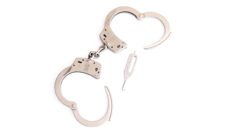Between 2006 and 2015, emergency departments in the United States treated an estimated 639,505 individuals for bunk-bed-related injuries. It might be surprising to learn that 27.7% of these injuries occurred in patients over 10 years of age. More surprising is that 29% of these ED visitors over 10 years of age were prisoners. Dr. Randall Loder and Jocelyn Cole Young conducted a descriptive study of more than 50,000 bunk bed injuries that occur in correctional institutions that resulted in emergency department visits.
The most common injury within jails (72%) involved falling out of a bunk bed. In comparison to the general population, incarcerated individuals suffering bunk bed injuries were older, male, and twice as likely to be admitted to the hospital for their injuries, especially head and neck trauma. Falls were most common for 25-34 year olds (16,900 individuals).
Injuries related to seizure disorder were four and a half times more common among incarcerated adults than non-incarcerated.
Injuries related to seizure disorder were four and a half times more common among incarcerated adults than non-incarcerated. The authors hypothesize that those recently incarcerated were at risk of suffering from seizure disorders due to alcohol or substance withdrawal. Providing medical treatment or requiring new prisoners to sleep on the bottom bunk for their first 48 hours may help mitigate the potential severity of such falls.
Dr. Loder explained, “The ideal approach [to preventing falls] would be to eliminate all bunk beds in jails. But the space/financial constraints on the system I suspect are such that such a strategy would be impossible. So we need to move to other, less than ideal, strategies.”
One such prevention strategy would be to install guard railings and ladders, safety features not required for prison bunk beds. The Code of Federal Regulations exempts prison beds from a standards requirement which would ensure the same safety manufacturing requirements as personal beds, which has been upheld in Federal Court. Lowering the height of the beds and reducing the severity of impact by softening floor materials could also help prevent serious injuries. Finally, requiring new prisoners to sleep on the bottom bunk for their first 48 hours or providing them with medication to ease symptoms would mitigate the severity of falls caused by drug and alcohol withdrawal.
Most importantly, solutions must be multi-faceted, and involve cooperation and input of medical personnel, engineers, and jail staff.
Image: Shutterstock













